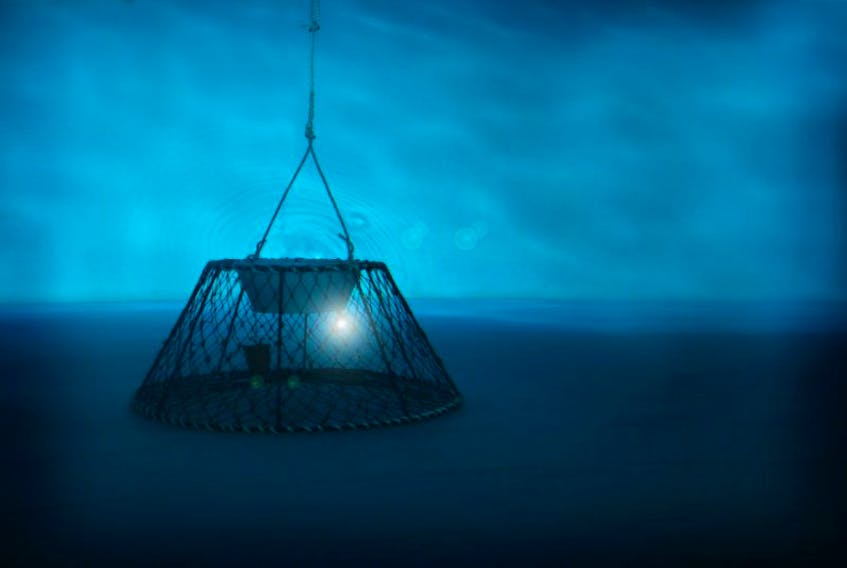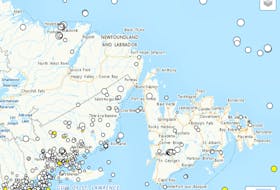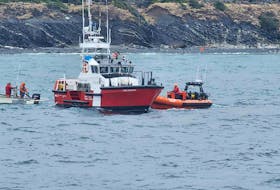“Fishing enterprises could theoretically reduce bait costs through LED light substitution, or enhance existing catch rates of baited traps by simply adding an LED light,” notes their research report, now available through the journal Aquaculture and Fisheries.
“Economic benefits are yet unclear, but widespread use of lights could potentially reduce operating cost by spending less days on the water, reducing fuel consumption, reducing labour effort while fishing, and reducing bait expenses.”
A team from Memorial University of Newfoundland’s Fisheries and Marine Institute, and the Department of Fisheries and Oceans completed related work in May and June 2016, with the help of the DFO base in St. John’s and, later, the fishing vessel Atlantic Champion.

The results were dramatic. Not only were crab showing up more in the traps set with bait and a light, there was also an increase in a key measure — the catch per unit of effort (CPUE) of fish harvesters.
The addition of a white LED light was shown in the study to increase CPUE by as much as 77 per cent. Crab were less keen on purple lights, but still drawn to them, with an up to 47 per cent increase in CPUE. Essentially, it’s more crab with less fishing.
“If you can increase the efficiency of anything in life by 70 per cent, that’s huge,” said Paul Winger, the director of the Centre for Sustainable Aquatic Resources at the Fisheries and Marine Institute, and co-author on the study, who is excited by the results.
The lead author is Khanh Nguyen, a PhD student also at MI, who had been involved in previous research involving use of artificial lighting in fisheries.

“I did not think the catch rate of a baited trap could be increased to the extent we achieved,” he said, in an emailed response to questions. “It was also very surprising to learn that we could capture snow crabs without bait using only lights.”
Many things can affect the ability for a trap to catch crab. They include: the number of animals in an area, the type of bait being used, how hungry the crabs are, the amount of time the trap has been in the water, the oceanographic conditions, plus the size and shape of the trap, and more.
In order to be sure the lights were getting the response, the study began with a series of tank tests, then moved to runs in the more variable conditions offshore.
Crabs can see, but spend their days in a generally dark and rugged environment. Traps here are commonly baited with imported squid, or small fish like herring. Crabs on the ocean floor are believed to smell the fish and come from “downstream.” But the light is another stimulus and draws even more in.

Exactly why hasn’t been pinpointed. In the dark environment, the lights may outline the trap as a potential shelter space, the crabs could be “trap happy” and just eager to get at the highlighted bait, and it’s been suggested the light might make it easier for the crabs to find the entrance to the traps.
Other species have shown an attraction to LED lights, including but not limited to: herring, tuna, squid, mackerel and cod. The more recent study focusing on snow crab was actually inspired by earlier work on traps for flatfish, where traps with a light included were getting snow crab as bycatch.
Lights added to the snow crab traps in the more recent study were Lindgren-Pitman LED Electralume fishing lights, able to sit in the palm of your hand and run even when 850-metres deep, for up to 500 consecutive hours, based on the battery life.
DFO regulates gear used in the fisheries and would ultimately have to approve any wide use of the lights.
Nguyen, Winger and the rest of the crab research team did note there should be some further consideration given to the use of lights, specifically adding light to where it doesn’t already exist.
The research team has launched a new round of study this crab season, looking at what changes in the position and orientation of lights within traps might do.









